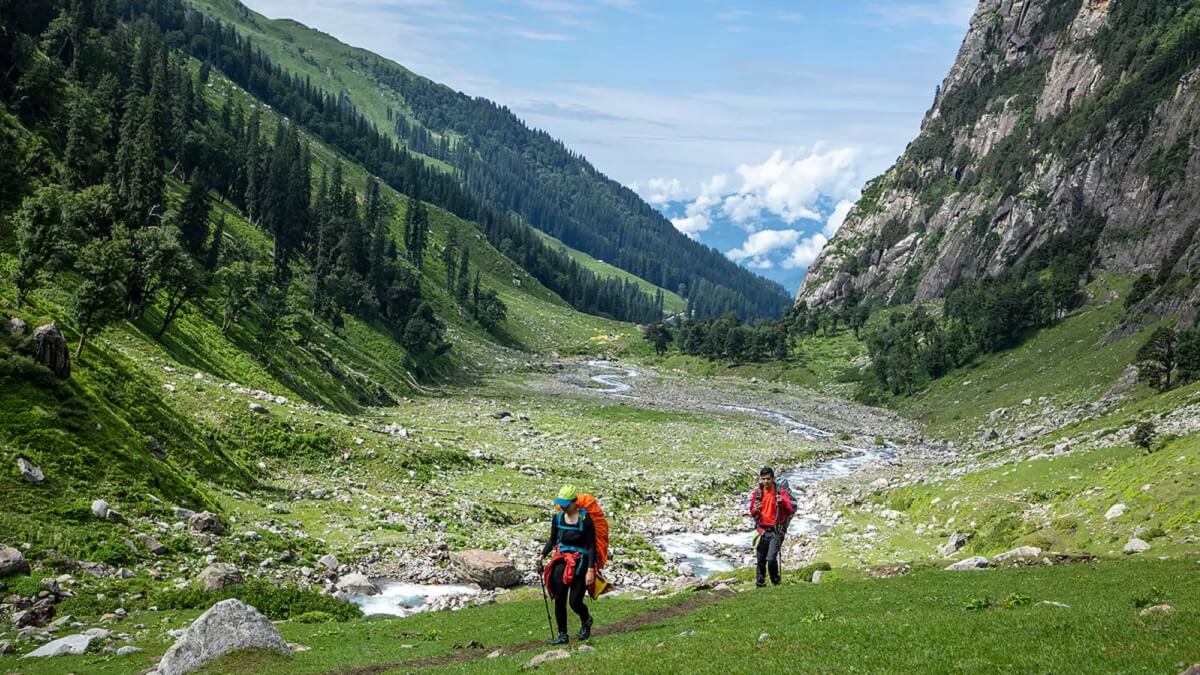Shea Goru
Published on June 30, 2025
Once you cross the mighty Hampta Pass, a whole new world unfolds before you — raw, rugged, and silent. Welcome to Shea Goru, the first campsite after crossing Hampta Pass, located deep within the Spiti Valley region of Himachal Pradesh. At an altitude of around 12,900 feet (3,932 meters), Shea Goru is a tranquil, desolate stretch of land surrounded by rocky mountains, glacial streams, and snow-patched ridges.
The landscape here marks a dramatic shift from the lush meadows of Kullu to the barren, moon-like terrain of Lahaul and Spiti. Shea Goru is more than just a campsite — it’s a gateway into the cold desert, a place to rest after the tough Hampta Pass climb, and a moment of reflection in nature’s rawest form.
Where is Shea Goru?
Shea Goru (also spelt as Shiagoru or Shia Goru) is situated in the Lahaul region, between Hampta Pass and the village of Chatru. It's the day-4 campsite on most Hampta Pass itineraries, following the challenging ascent and descent of the Hampta Pass summit.
The name “Shea Goru” roughly translates to “Cold Street” or “Cold Valley,” and the name couldn’t be more appropriate.

Reaching the Shea Goru from the Hampta Pass
The journey to Shea Goru begins right after crossing Hampta Pass. The descent from the pass is steep, slippery, and requires careful footing. Trekkers often use trekking poles and take help from the trek leaders or guides during this portion.
The descent includes:
-
Steep scree and moraine patches
-
Occasional snow crossings (especially in June/July)
-
Narrow trails along rocky cliffs
-
First glimpses of Spiti Valley’s dry terrain
After 2–3 hours of cautious descent, the valley opens up, and you reach the flat plains of Shea Goru, carved by glacial meltwater.
First Impressions of Shea Goru
Reaching Shea Goru feels like stepping into another world. You leave behind the green meadows of Jobra, Chika, and Balu Ka Ghera, and enter a dramatic, arid landscape that is more akin to Ladakh and Spiti than to Kullu.
Landscape Features:
-
Barren hills, dark rock formations, and snow-capped peaks
-
A glacial stream flowing near the campsite
-
Soft, semi-frozen terrain for tents
-
Cold winds are sweeping across the valley
-
Absolutely no tree cover — just stark beauty
It’s the kind of place where silence speaks louder than words.
Camping at Shea Goru
Camping at Shea Goru is a reward after the most physically demanding day of the trek. The site is usually set up along the left bank of the glacial stream, on relatively even ground.
Camping Highlights:
-
Shared dome tents with warm sleeping bags and mats
-
Dining tents for group meals
-
Dry toilet tents at a safe distance
-
The sky here is crystal clear – perfect for stargazing
-
The stream provides water for cooking, cleaning, and refilling bottles
The night temperature can drop to -2°C to -5°C, especially in June and September. Winds are strong, and it gets very chilly after sunset.

Climate and Conditions at Shea Goru
Shea Goru is situated in the rain-shadow zone, so it receives little to no rainfall, unlike the lush Kullu side of the trek.
Typical Weather:
-
Daytime temperature: 10°C to 15°C (feels cooler due to wind)
-
Night temperature: -5°C to 2°C
-
Wind chill is significant
-
No vegetation, minimal moisture
-
Air is dry and thin – be mindful of hydration
Trekkers often feel a combination of fatigue and awe at this stage — you’ve crossed a Himalayan pass, and now you’re camping in a cold desert!
Stream Crossing After Shea Goru
One of the notable challenges post Shea Goru is a glacial stream crossing on the way to Chatru. This happens early in the morning the next day, to avoid strong currents.
Trekkers need:
-
Sandals or floaters (for wet crossing)
-
Trekking pole or guide support
-
Fast movement to reduce foot freezing
-
Towels to dry feet and socks after the crossing
It’s one of the most adventurous elements of the trek, and a memory you won’t forget.
Photography & Landscape Charm
For photographers and nature lovers, Shea Goru offers an alien-like Himalayan landscape. Unlike the greenery of Jobra or Chika, here you get:
-
Contrasting snow and black rocks
-
Sunset and moonrise shots with surreal tones
-
Stunning shots of long shadows and light beams
-
Milky Way views on clear nights
Don’t forget to carry a wide-angle lens and extra batteries, as cold temperatures drain power quickly.
Peace and Stillness – The Spiritual Side
Many trekkers describe Shea Gompa as the most peaceful part of the trek. After the rush of crossing Hampta Pass, you’re in a silent, open space where time slows down.
It’s ideal for:
-
Meditation or quiet reflection
-
Writing a journal
-
Bonding with fellow trekkers under starlight
-
Just lying down and listening to the wind
You realise how small human worries feel compared to the grandeur around you.
Eco Responsibility at Shea Goru
Shea Goru is a fragile ecological zone. With no trees, no natural waste disposal, and no infrastructure, the responsibility lies with trekkers.
Do’s and Don’ts:
-
✅ Carry all trash back (no littering)
-
✅ Use biodegradable soap and wet wipes
-
✅ Do not wash directly in the stream
-
✅ Use toilet tents responsibly
-
❌ Don’t dig pits or make fires
Protect this pristine campsite for future generations.
The Soulful Stop Before Civilisation
Shea Goru may not have trees or flowers, but it has something deeper — isolation, silence, and the grandeur of untouched mountains. It marks the transition from intense trekking to the road back to civilisation.
After Shea Goru, the trek winds down to Chatru, and possibly Chandratal Lake if the weather allows. But for many, the feeling of standing in the cold winds of Shea Goru, surrounded by towering ridges and absolute silence, stays in the heart forever.
